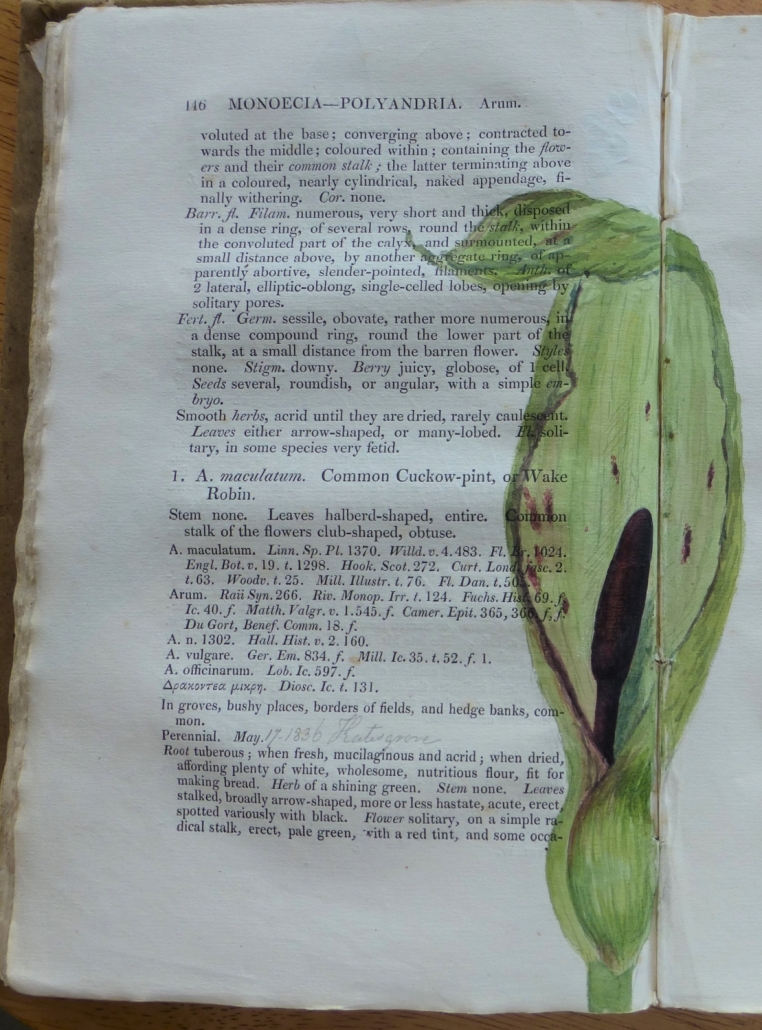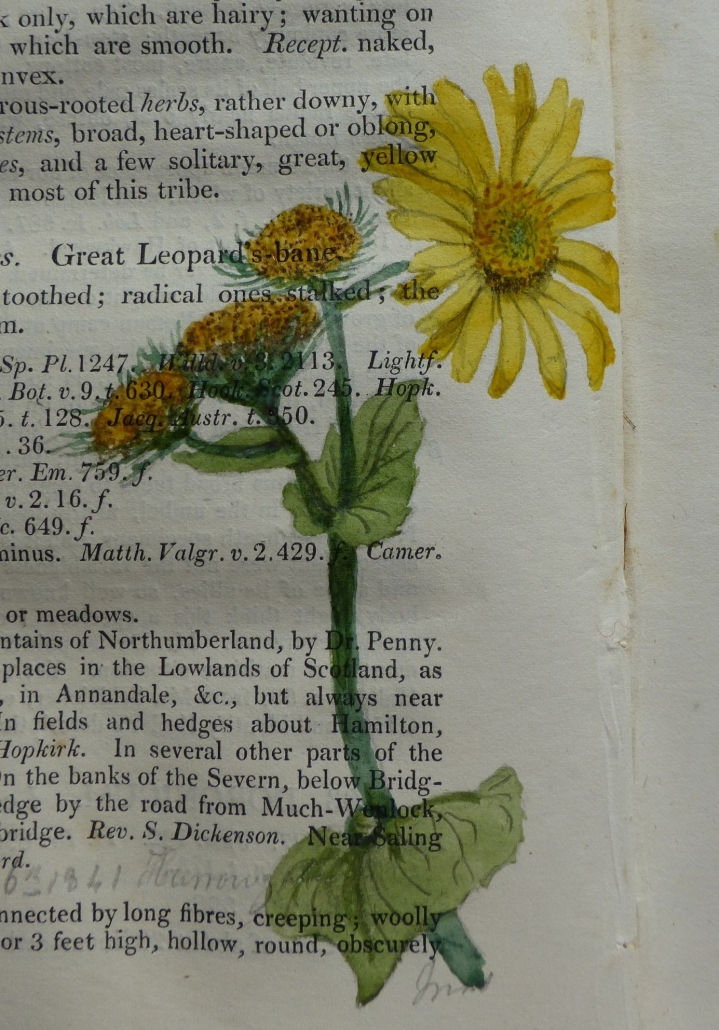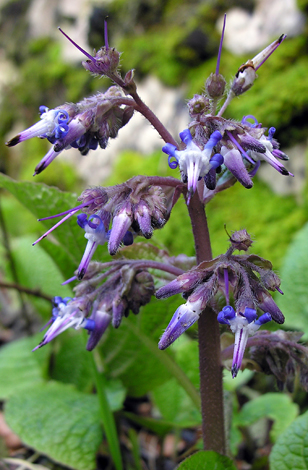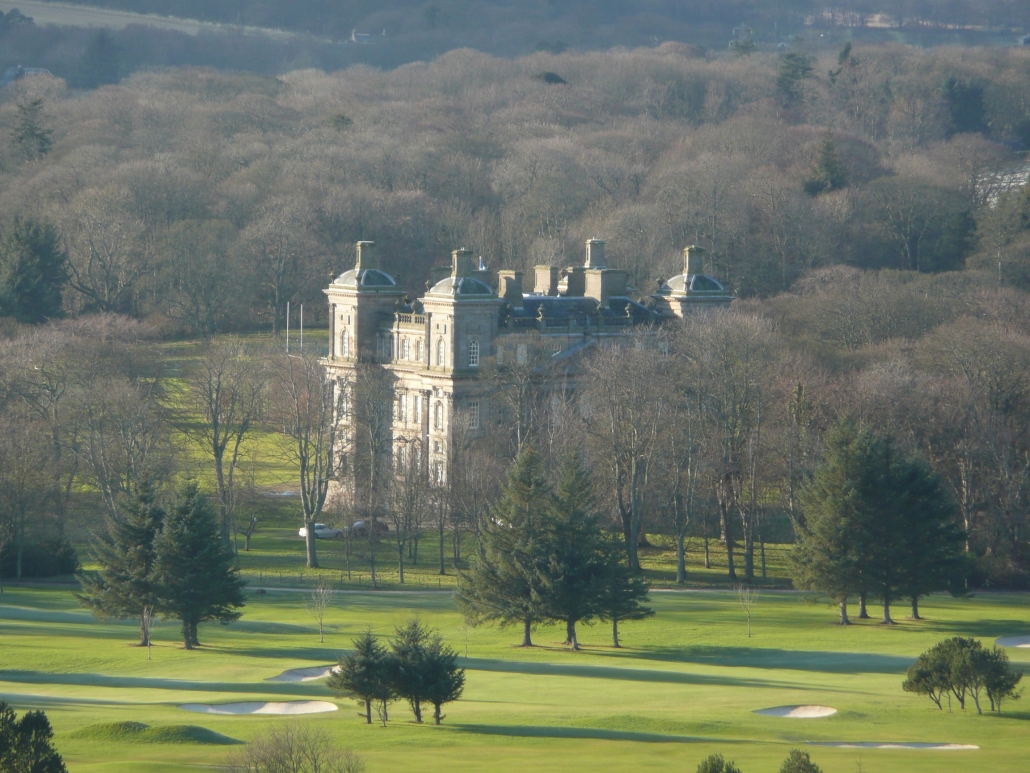Continuing to pick out some of the interesting wild flowers that used to be, and still are, in Duff House woods; plus a rare addition in more recent years!
Arum Maculatum – Common Cuckoo Pint. This has been seen in a number of places around the woods which is not surprising as it was deliberately introduced. One reason for this could be that the root forms an excellent flour which can be used for starch; indeed many centuries ago the church insisted it was used to whiten and stiffen altar cloths; similarly it was used for gentleman’s collars. A common name for the plant is “Lords and Ladies”, because there are both female and male elements on the stalk of flowers and berries – known as a spadix; the same derivation as the “pint” in the name, being short for the word “pintle”, a word referring to the male sex organ. There is one major drawback of the plant – it is extremely poisonous to humans and many animals; but not to birds who eat the ripe berries and spread seeds. This picture was painted in 1836.

Sometimes the leaves are not spotted and these are known as Arum Immaculatum!
Doronicum Paralianches – Leopard’s Bane. This is a large plant up to about a metre tall, and it’s bright yellow flowers – some of the earliest in the year – can be up to two inches across. It is another flower that was reportedly introduced into Duff House woods; whether this was because it’s flowers can be used to help bruises, even eaten, or massaged into the skin, to relieve pain and inflammation – or because of it’s aromatic and bright appearance is not known. This watercolour was done in 1841.

Trachystemon Orientalis – Abraham Isaac Jacob. An interesting name, one that supposedly derives from the feature that the flower has three colours in one. This photo is courtesy of Peter Llewellyn. The flower starts showing in late spring. This plant is native to eastern europe where it is very common; it is quite possible that the Duff House woods patch is the most northerly example – although a few smaller patches are also reported locally. It is first recorded anywhere in the UK in 1868, but not listed by 1907 as being in this area. In the last 12 years the patch near the Mausoleum has been seen to double in size, so clearly it likes the conditions there! This may be a sign of the temperate climate of this part of the Deveron valley and/or global warming!


